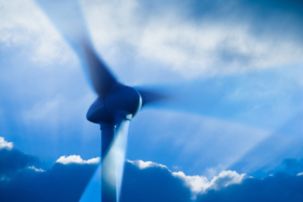Lesson summary
In this activity students look at how climate change may affect the food webs and the trophic relationships within them. Students begin by refreshing their knowledge of food webs by working as a class to create an African grassland food web. Students will then break into groups to explore a number of different ecosystems and will investigate how these ecosystems might be impacted by climate change. Students are asked to create a short film or animation sharing their research.
Learning intentions:
Students will...
- understand what is meant by food chain, food web, trophic level and trophic relationships
- understand that different ecosystems are comprised of unique food webs and trophic relationships
- recognise that climate change will have impacts on the integrity of food webs
- understand that although the impacts of climate change will affect different organisms in different ways, the whole food web will affected.
Lesson guides and printables
Lesson details
Curriculum mapping
Australian curriculum content descriptions:
Year 7 Science:
- Interactions between organisms can be described in terms of food chains and food webs; human activity can affect these interactions (ACSSU112)
- Identify questions and problems that can be investigated scientifically and make predictions based on scientific knowledge (ACSIS124)
- Summarise data, from students’ own investigations and secondary sources, and use scientific understanding to identify relationships and draw conclusions (ACSIS130)
- Communicate ideas, findings and solutions to problems using scientific language and representations using digital technologies as appropriate (ACSIS133)
Syllabus Outcomes: SC4-4WS, SC4-7WS, SC4-9WS, SC4-15LW.
Time required: 60 mins
Level of teacher scaffolding: Medium – facilitate activity
Resources required
- Internet access
- Student worksheet
- Blackboard/whiteboard
- Computer-based or online movie or animation programs
- Animal names worksheet (click here to download)
- Ball of string
Additional info
This is an original Cool.org lesson. Facts and figures in these lessons may have changed since this lesson was published. We always endeavour to update our resources in a timely manner, but if you see an error or issue in our resources please get in touch with us.


Welcome back!
Don't have an account yet?
Log in with:
By signing up to Cool.org you consent and agree to Cool's privacy policy to
store, manage and process your personal information. To read more, please see
our privacy policy here(Opens in new tab).
Create your free Cool.org account.
Many of our resources are free, with an option to upgrade to Cool+ for premium content.
Already have an account?
Sign up with:
By signing up to Cool.org you consent and agree to Cool's privacy policy to
store, manage and process your personal information. To read more, please see
our privacy policy here(Opens in new tab).